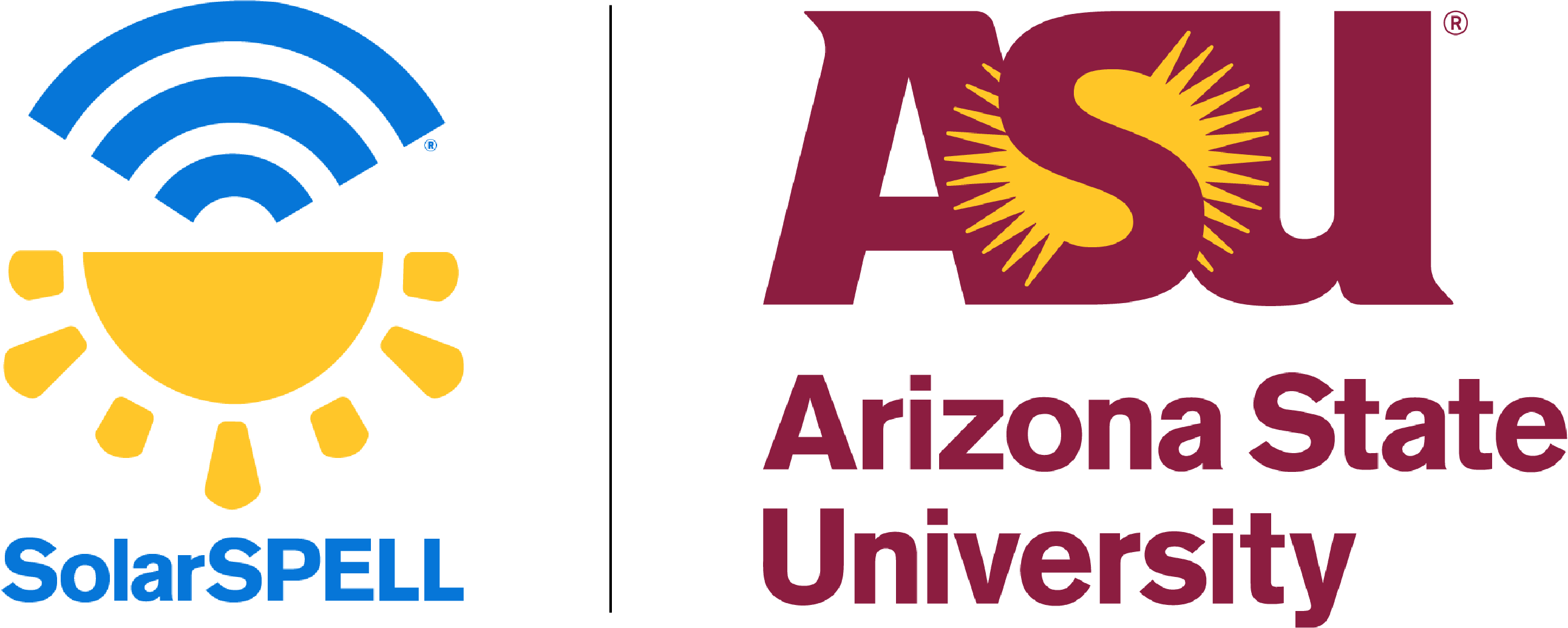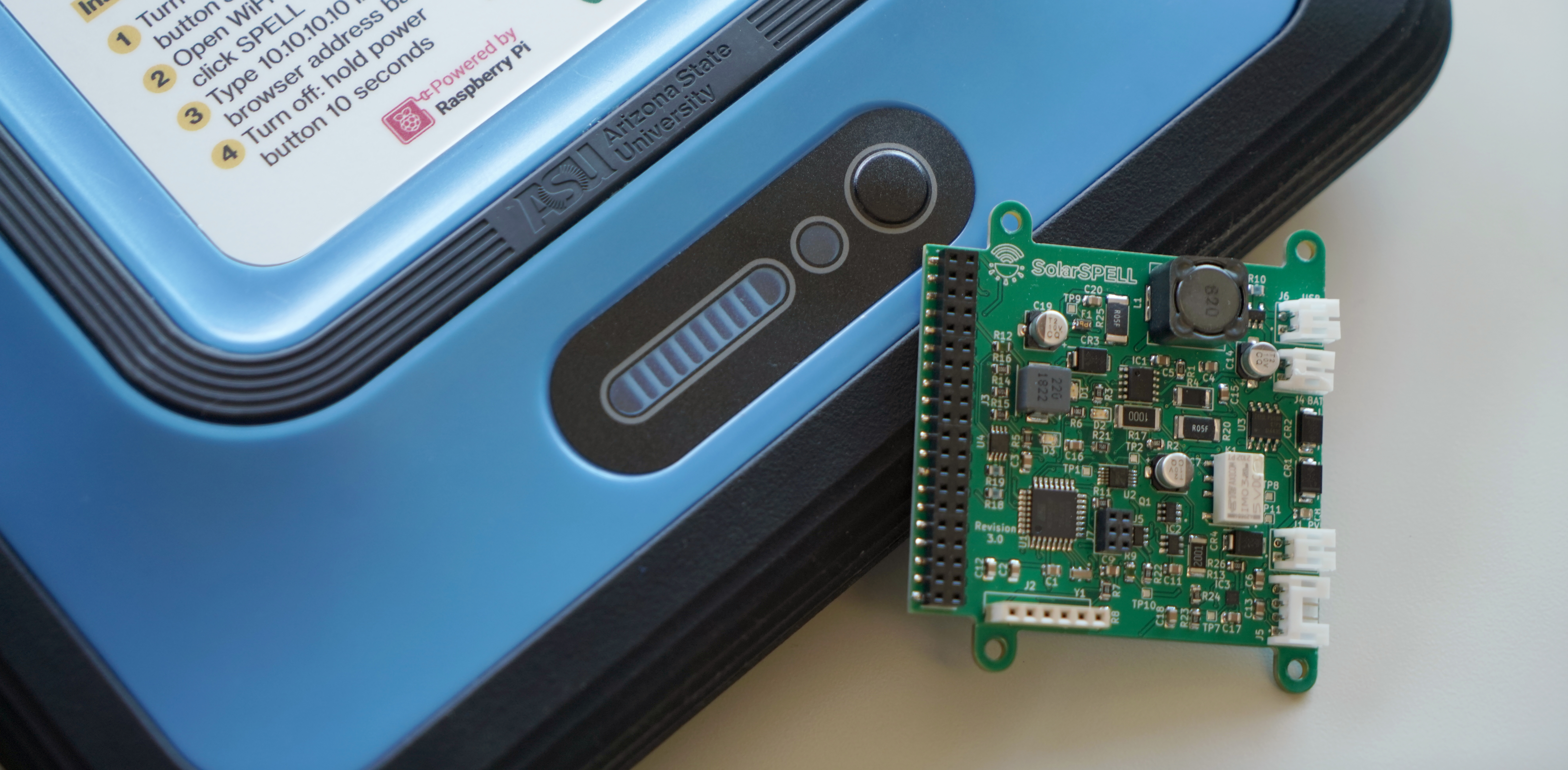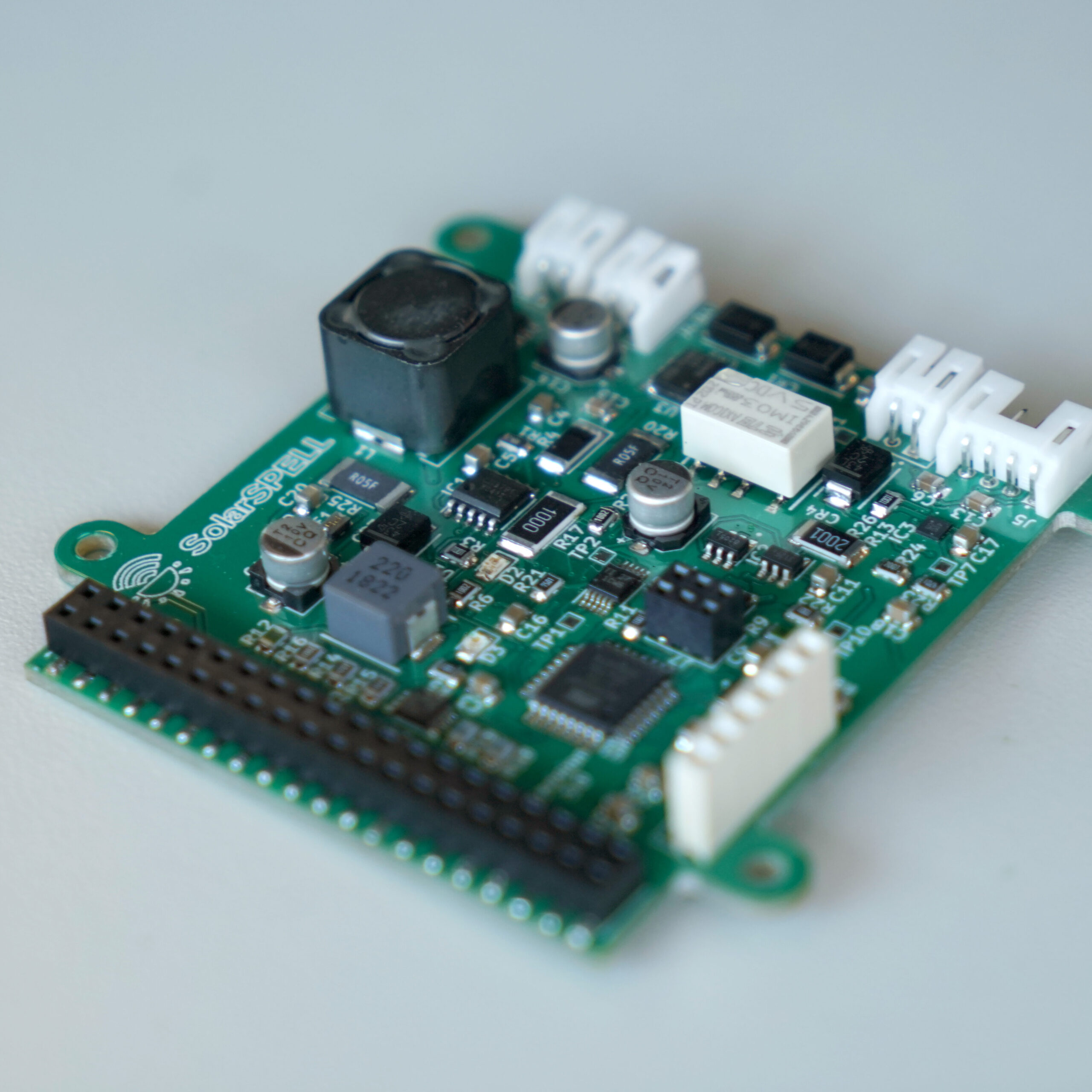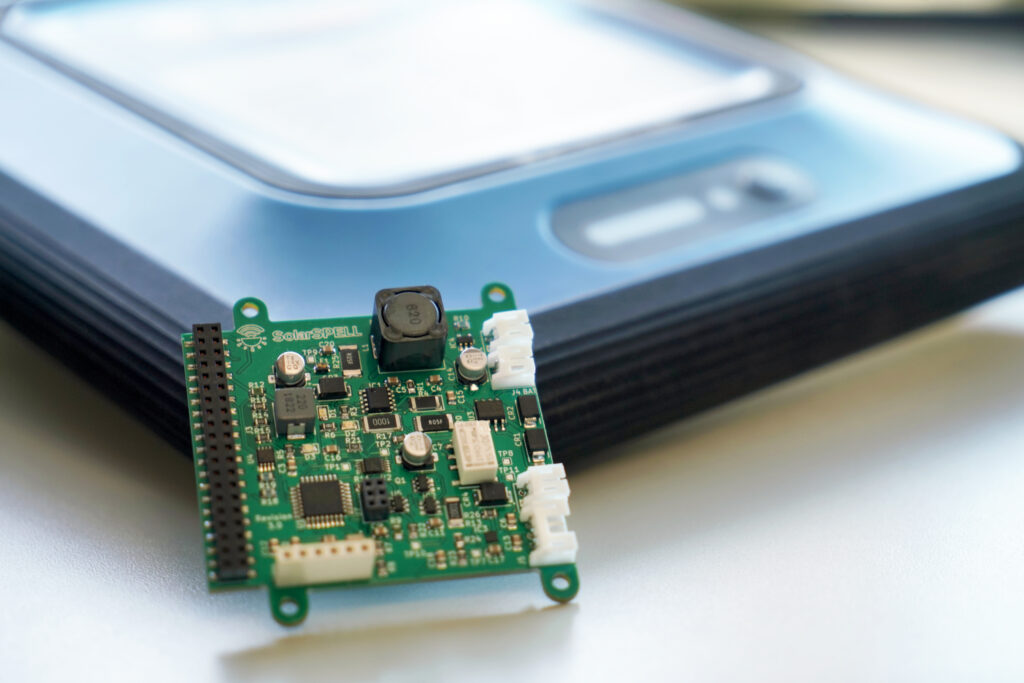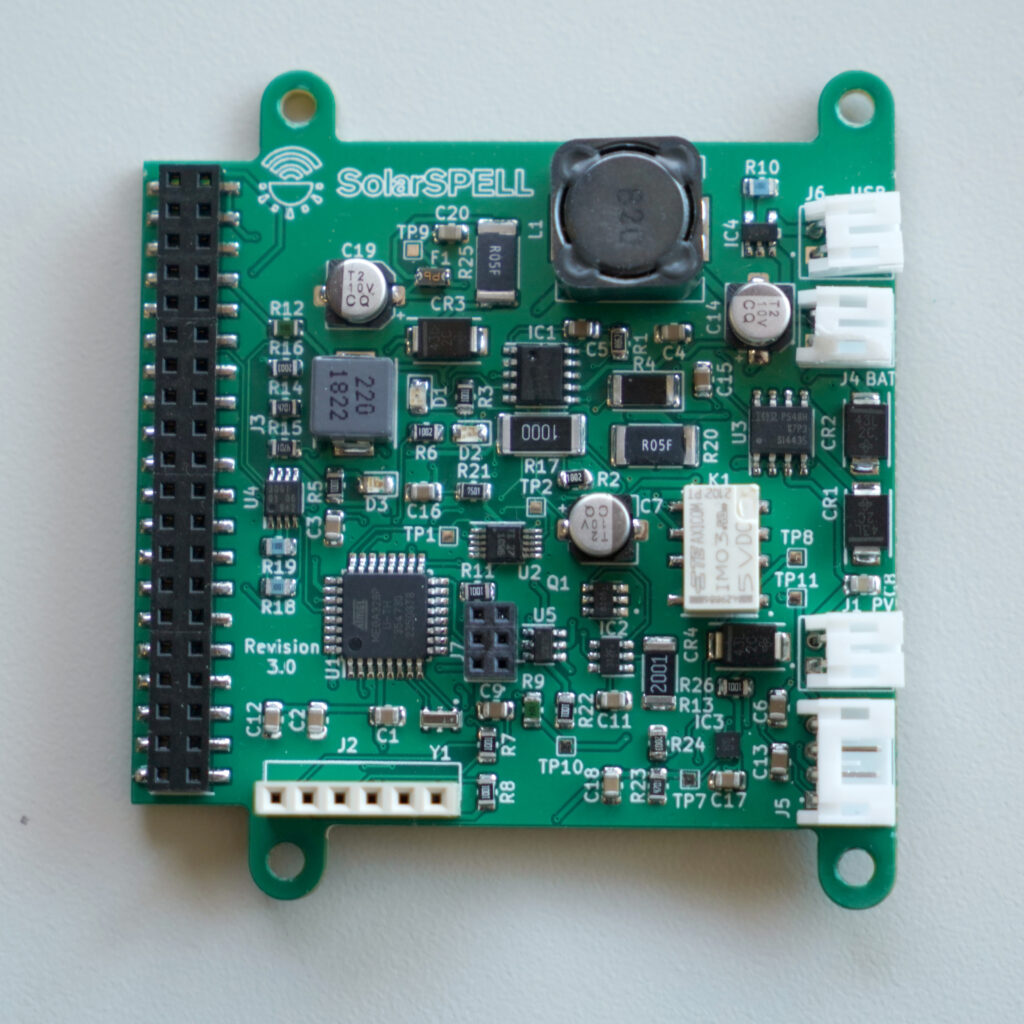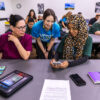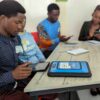As a university initiative, SolarSPELL has always believed in the potential of university students to contribute groundbreaking developments to all aspects of our work. This was certainly the case when we leveraged the expertise and enthusiasm of ASU engineering students to design a small 10-watt charge controller for our new offline digital library hardware.
Our primary objectives were twofold: to provide students with hands-on experience in PCB design while simultaneously addressing the practical real-world need for a small-scale, maximum power point tracking (MPPT) charge controller to support SolarSPELL’s new hardware design. For their part, the students enthusiastically embraced the opportunity to apply their theoretical engineering foundation to a tangible humanitarian project.
Under the guidance of experienced faculty and industry-seasoned university staff, students specializing in printed circuit board (PCB) design and renewable energy engineering were challenged to channel their skills into a real-world humanitarian project — the PCB design of a compact MPPT charge controller to improve the energy efficiency and reliability of our off-grid offline digital library. As the SolarSPELL digital library runs on a Raspberry Pi 3 microcomputer, the charge controller needed to interface both power and data through the Raspberry Pi 3’s 40 General-Purpose Input/Output pins (GPIO).
The students worked in collaborative teams to refine their designs over multiple semesters of iterations, PCB prototyping and testing. We first began working on this project in 2019, but as COVID-19 took hold and the university switched to online instruction, progress slowed. Supply chain issues also slowed the project as the PCB production vendors had issues with chip supplies, personnel and other logistical complications. Overall the project ran from 2019 to 2023, or 8 semesters, due to these unforeseen issues.
Design considerations
The design process involved careful consideration of various factors, including power efficiency, compact form factor and compatibility with the Raspberry Pi microcomputer and with small output 12-volt 10-watt solar panels. Students engaged in rigorous research, utilizing their academic training to inform decisions related to component selection, layout optimization and overall functionality. The team began with a selection of key integrated circuits (ICs) for the charge controller, battery USB charging, and data IC for user performance out of the charge controller. The selected ICs were the Consonance CN3791 – 4A; Li-ion Battery Charger IC with Photovoltaic Cell MPPT Function; STMicroelectronics STC4054GR – USB Battery Management 800mA Linear Li-Ion battery charger; and the ATMEGA328P – Microcontroller, 8-BIT with 32 KB In-System Programmable Flash. We then reviewed reference designs and created an integrated optimal design, which also supported the Raspberry Pi’s GPIO pin layout.
Prototyping and testing
Once the initial designs were conceptualized and software modeled, the project transitioned to the prototyping phase. Students translated their theoretical designs into physical prototypes, refining the layout for optimal performance. We then implemented rigorous testing procedures to evaluate the charge controller’s efficiency, reliability and compatibility with various solar panel and battery configurations. A PCB production vendor manufactured ten prototypes, which were both lab-tested and field-tested. Three rounds of prototyping took place before the design was finalized and a 100-unit production run ordered.
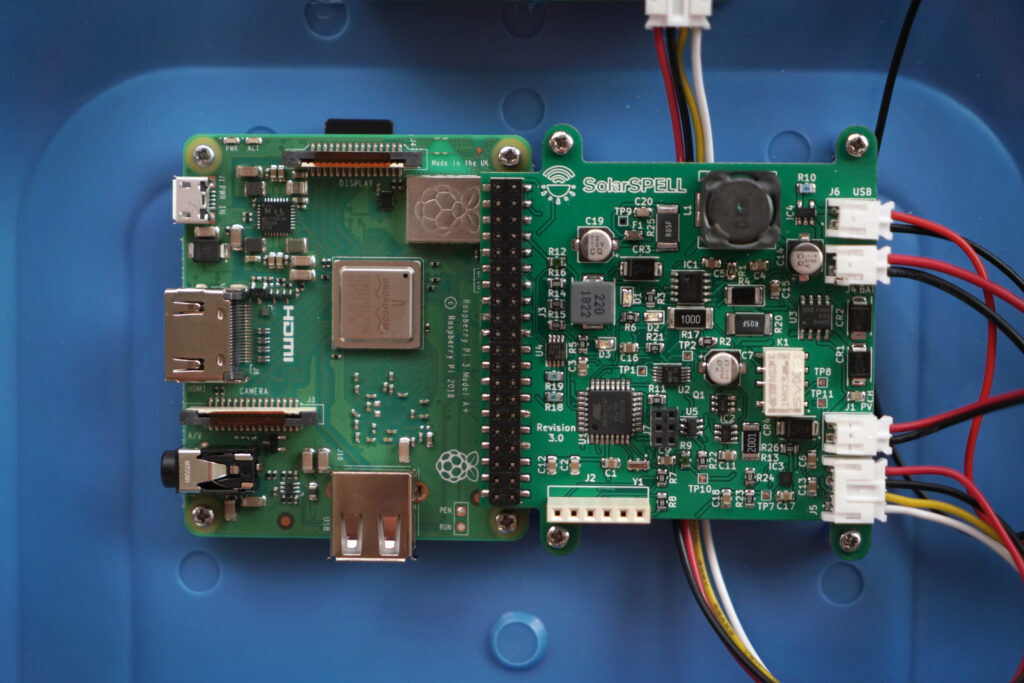
Photo by Abby Johnson / SolarSPELL
What’s next?
This project provided students with a holistic understanding of the PCB design process, from conceptualization to prototyping, testing, vendor management and final production run. Through hands-on experience, they gained insights into problem-solving, teamwork and the practical applications of their academic knowledge. Meanwhile, the impact of their contributions is already resonating far beyond the confines of the university.
In February the first batch of 70 SolarSPELL digital libraries arrived in Rwanda, where our partners at B2R Farms provided the first feedback on the new design. A new group of ASU engineering students is already hard at work on design changes for the next 100-unit production run of charge controller PCBs.
Beyond the immediate success of designing a functional MPPT charge controller, this project exemplifies the potential that collaborative initiatives hold in shaping the future of renewable energy solutions and humanitarian engineering. Providing students with opportunities to apply their academic knowledge to real-world projects is a powerful model for fostering innovation, encouraging students to contribute meaningfully to sustainable technology development.
Learn more about student opportunities with SolarSPELL at solarspell.org/student-opportunities

Photo by Rachel Nova / SolarSPELL
Sign up to have new blog posts sent straight to your inbox:
